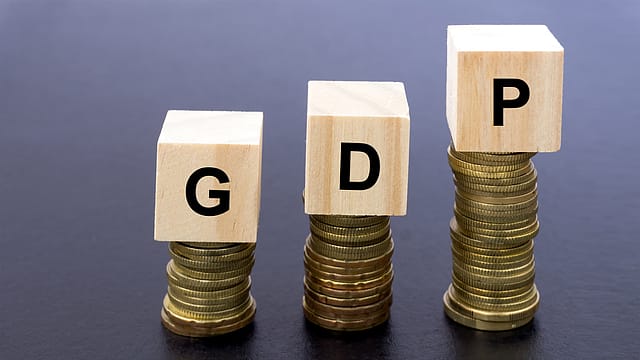India’s GDP growth slows to 6.3% in July-Sept period
ADVERTISEMENT

After hitting double digital growth in the previous quarter, India's economy grew at 6.3% in the July-September quarter of 2022-23 as compared to 8.4% in the same period last year, mainly due to the lack of favourable base effect, the government data released today shows.
India's economy had grown by a whopping 13.5% in the previous quarter of the fiscal year. The slowing of economic growth this time can be attributed to several macroeconomic factors including low base, drag from global spillovers, elevated inflation and slackening of external demand.
The data released by the Ministry of Statistics and Programme Implementation today shows the real GDP grew at ₹38.17 lakh crore in Q2 FY23 against ₹35.89 lakh crore in Q2 FY22, up 6.3% vs 8.4% in the year-ago period. The nominal GDP growth (current prices) in the said quarter was ₹65.31 lakh crore against ₹56.20 lakh crore in Q2 FY22, a growth of 16.2% vs 19% in the year-ago period.
The ministry says India's GDP at constant prices in the April-September or H1 FY23 period stood at ₹75.02 lakh crore, as compared to ₹68.36 lakh crore in the same period last year. This is a growth of 9.7% in H1FY23 against 13.7% during the same period last year. H1 FY23 GDP at current prices was ₹130.26 lakh crore against ₹107.47 lakh crore in the year-ago period, a growth of 21.2% against 25% during the same period last year.
December 2025
The annual Fortune 500 India list, the definitive compendium of corporate performance, is out. This year, the cumulative revenue of the Fortune 500 India companies has breached $2 trillion for the first time. Plus, find out which are the Best B-schools in India.
The current GDP numbers are largely in line with estimates by financial institutions, economists and other agencies.
“We are observing normalisation in growth rates compared to the previous quarter due to waning Covid effect. The private consumption growth remains robust. The growth is expected to remain resilient despite global headwinds on the back of strong domestic demand,” says Ritika Chhabra, economist, Prabhudas Lilladher.
In terms of Gross Value Added (GVA), the GDP growth for the July-September quarter also eased to 5.6%, a decline from 8.3% in the year-ago period and 12.7% in the April-June quarter. According to the ministry, India's GDP in nominal terms grew at 16.2% in the last quarter.
“GDP growth at 6.3% in Q2 FY23 was in line with our expectation of 6.2%. However, GVA growth was slightly lower than expected at 5.6%. The internals indicate a substantially weak growth in the industrials sector led by manufacturing while services sector growth has been steady given the recovery in contact-based services. We expect the same trend to continue into 2HFY23,” says Suvodeep Rakshit, chief economist, Kotak Institutional Equities.
The Reserve Bank of India (RBI) governor during the September monetary policy meeting had also said that the MPC expected the second quarter GDP growth at 6.3%, while the GDP growth in Q3 and Q4 is expected to be 4.6% each, with risks broadly balanced.
The slowing of GDP growth comes at a time when the International Monetary Fund (IMF) has projected that global growth will slow from 6% in 2021 to 3.2% in 2022 and 2.7% in 2023 due to sharper-than-expected slowdown, high inflation, tighter financial conditions, increase in the cost of living, Russia-Ukraine war and lingering Covid-19 pandemic. The multilateral agency expects global inflation to rise from 4.7% in 2021 to 8.8% in 2022.
On the back of favourable domestic policies and a focus on boosting investment and jobs, India, however, is on the way to becoming the third-largest economy by 2027 after the US and China, Morgan Stanley said recently.
The next release of quarterly GDP estimates for Q3 FY23 will be on February 28, 2023.
